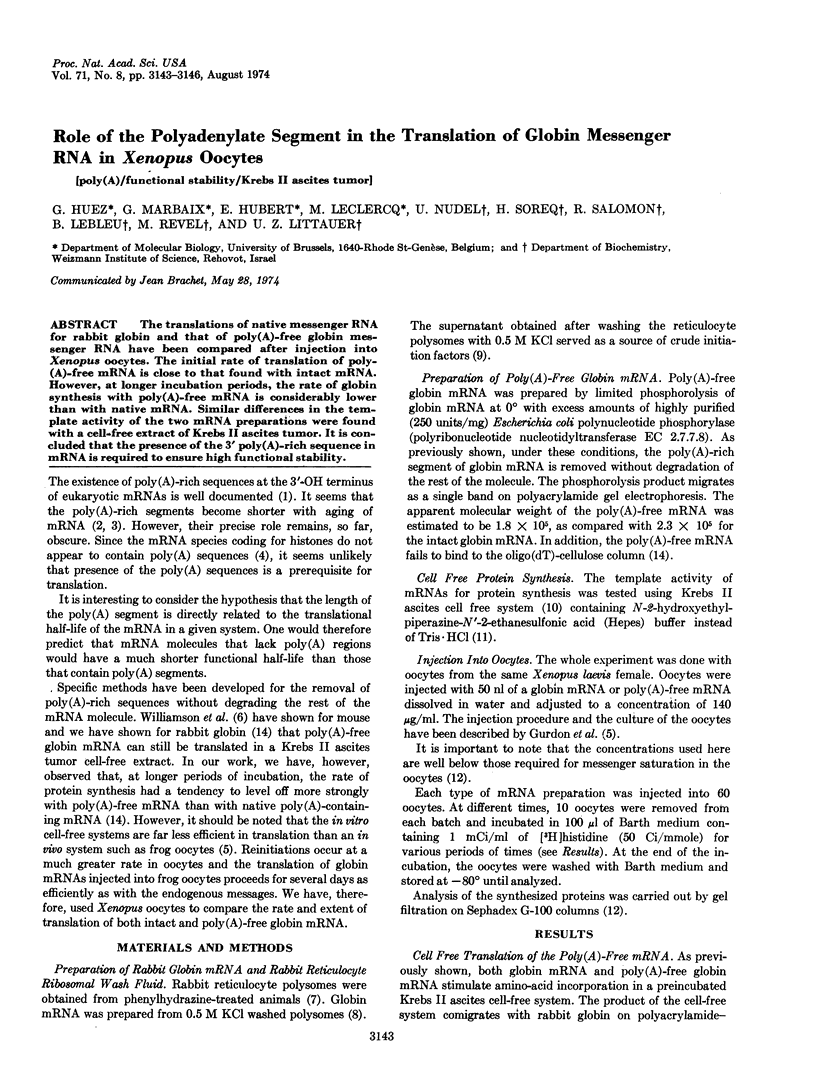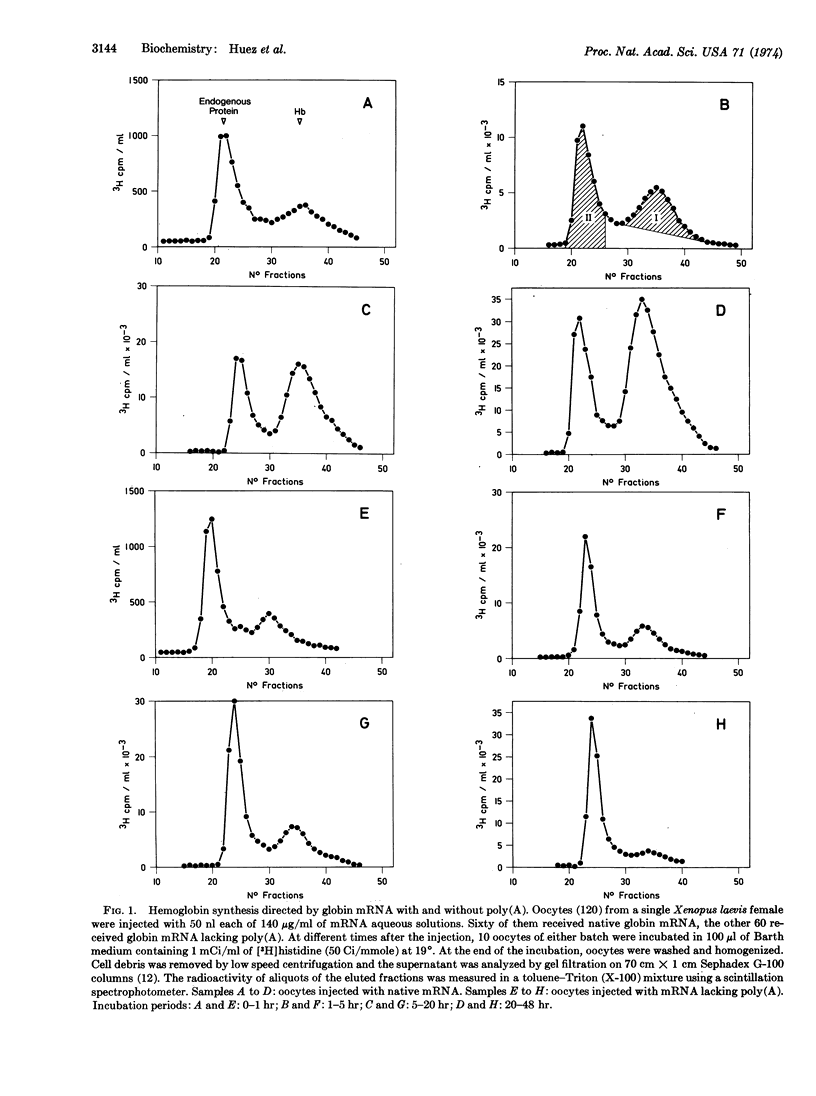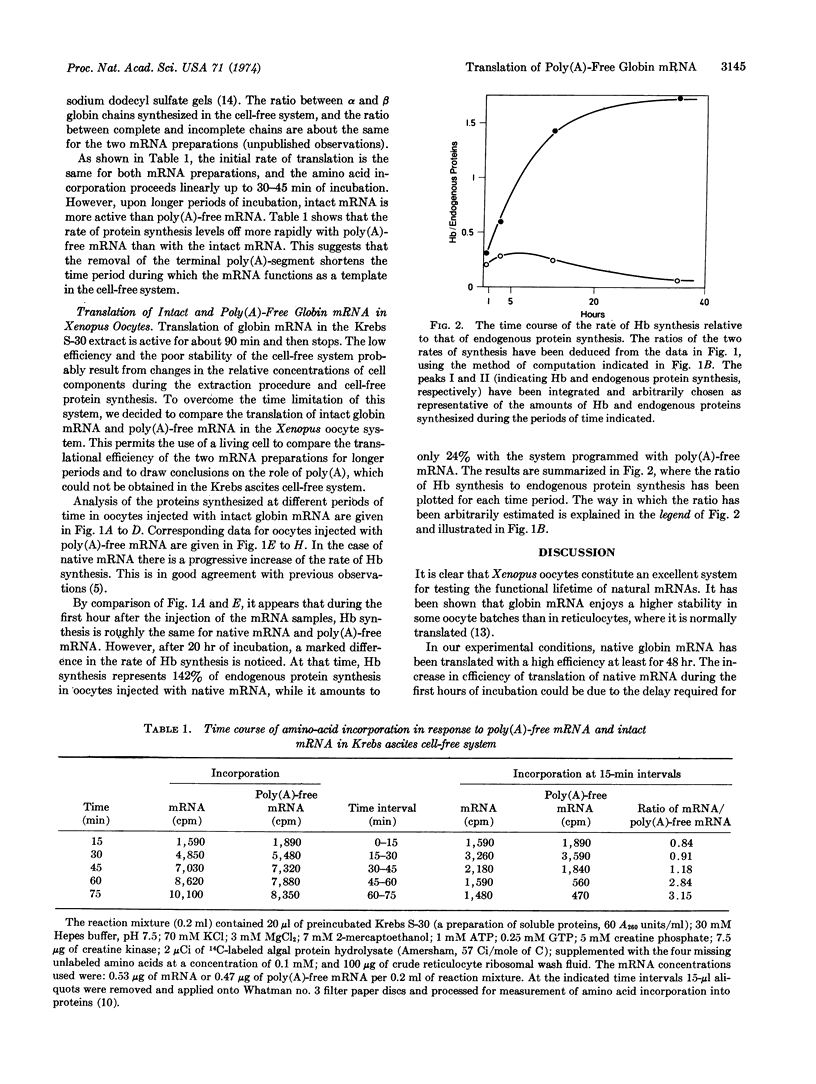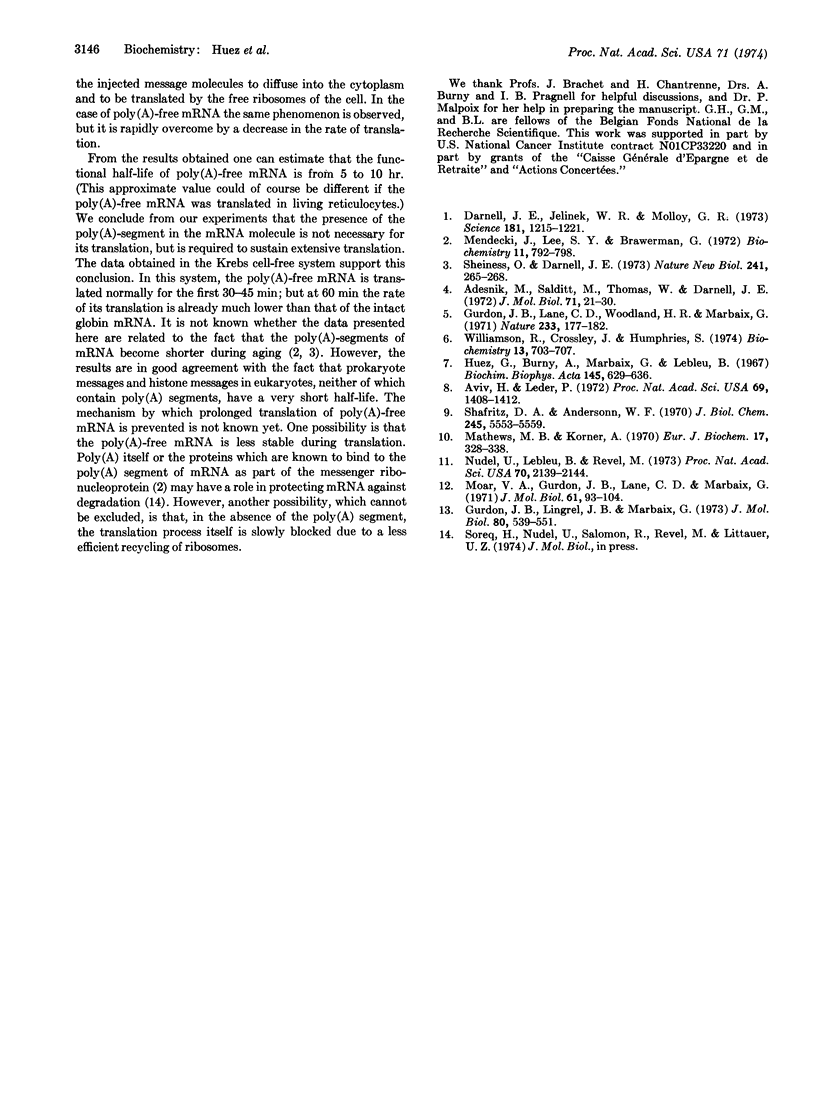Abstract
The translations of native messenger RNA for rabbit globin and that of poly(A)-free globin messenger RNA have been compared after injection into Xenopus oocytes. The initial rate of translation of poly(A)-free mRNA is close to that found with intact mRNA. However, at longer incubation periods, the rate of globin synthesis with poly(A)-free mRNA is considerably lower than with native mRNA. Similar differences in the template activity of the two mRNA preparations were found with a cell-free extract of Krebs II ascites tumor. It is concluded that the presence of the 3′ poly(A)-rich sequence in mRNA is required to ensure high functional stability.
Keywords: poly(A), functional stability, Krebs II ascites tumor
Full text
PDF



Selected References
These references are in PubMed. This may not be the complete list of references from this article.
- Adesnik M., Salditt M., Thomas W., Darnell J. E. Evidence that all messenger RNA molecules (except histone messenger RNA) contain Poly (A) sequences and that the Poly(A) has a nuclear function. J Mol Biol. 1972 Oct 28;71(1):21–30. doi: 10.1016/0022-2836(72)90397-x. [DOI] [PubMed] [Google Scholar]
- Aviv H., Leder P. Purification of biologically active globin messenger RNA by chromatography on oligothymidylic acid-cellulose. Proc Natl Acad Sci U S A. 1972 Jun;69(6):1408–1412. doi: 10.1073/pnas.69.6.1408. [DOI] [PMC free article] [PubMed] [Google Scholar]
- Darnell J. E., Jelinek W. R., Molloy G. R. Biogenesis of mRNA: genetic regulation in mammalian cells. Science. 1973 Sep 28;181(4106):1215–1221. doi: 10.1126/science.181.4106.1215. [DOI] [PubMed] [Google Scholar]
- Gurdon J. B., Lane C. D., Woodland H. R., Marbaix G. Use of frog eggs and oocytes for the study of messenger RNA and its translation in living cells. Nature. 1971 Sep 17;233(5316):177–182. doi: 10.1038/233177a0. [DOI] [PubMed] [Google Scholar]
- Gurdon J. B., Lingrel J. B., Marbaix G. Message stability in injected frog oocytes: long life of mammalian alpha and beta globin messages. J Mol Biol. 1973 Nov 5;80(3):539–551. doi: 10.1016/0022-2836(73)90421-x. [DOI] [PubMed] [Google Scholar]
- Huez G., Burny A., Marbaix G., Lebleu B. Release of messenger RNA from rabbit reticulocyte polyribosomes at low concentration of divalent cations. Biochim Biophys Acta. 1967;145(3):629–636. doi: 10.1016/0005-2787(67)90122-0. [DOI] [PubMed] [Google Scholar]
- Mathews M., Korner A. Mammalian cell-free protein synthesis directed by viral ribonucleic acid. Eur J Biochem. 1970 Dec;17(2):328–338. doi: 10.1111/j.1432-1033.1970.tb01170.x. [DOI] [PubMed] [Google Scholar]
- Mendecki J., Lee S. Y., Brawerman G. Characteristics of the polyadenylic acid segment associated with messenger ribonucleic acid in mouse sarcoma 180 ascites cells. Biochemistry. 1972 Feb 29;11(5):792–798. doi: 10.1021/bi00755a018. [DOI] [PubMed] [Google Scholar]
- Moar V. A., Gurdon J. B., Lane C. D., Marbaix G. Translational capacity of living frog eggs and oocytes, as judged by messenger RNA injection. J Mol Biol. 1971 Oct 14;61(1):93–103. doi: 10.1016/0022-2836(71)90208-7. [DOI] [PubMed] [Google Scholar]
- Nudel U., Lebleu B., Revel M. Discrimination between messenger ribonucleic acids by a mammalian translation initiation factor. Proc Natl Acad Sci U S A. 1973 Jul;70(7):2139–2144. doi: 10.1073/pnas.70.7.2139. [DOI] [PMC free article] [PubMed] [Google Scholar]
- Shafritz D. A., Anderson W. F. Isolation and partial characterization of reticulocyte factors M1 and M2. J Biol Chem. 1970 Nov 10;245(21):5553–5559. [PubMed] [Google Scholar]
- Sheiness D., Darnell J. E. Polyadenylic acid segment in mRNA becomes shorter with age. Nat New Biol. 1973 Feb 28;241(113):265–268. doi: 10.1038/newbio241265a0. [DOI] [PubMed] [Google Scholar]
- Williamson R., Crossley J., Humphries S. Translation of mouse globin messenger ribonucleic acid from which the poly(adenylic acid) sequence has been removed. Biochemistry. 1974 Feb 12;13(4):703–707. doi: 10.1021/bi00701a011. [DOI] [PubMed] [Google Scholar]


